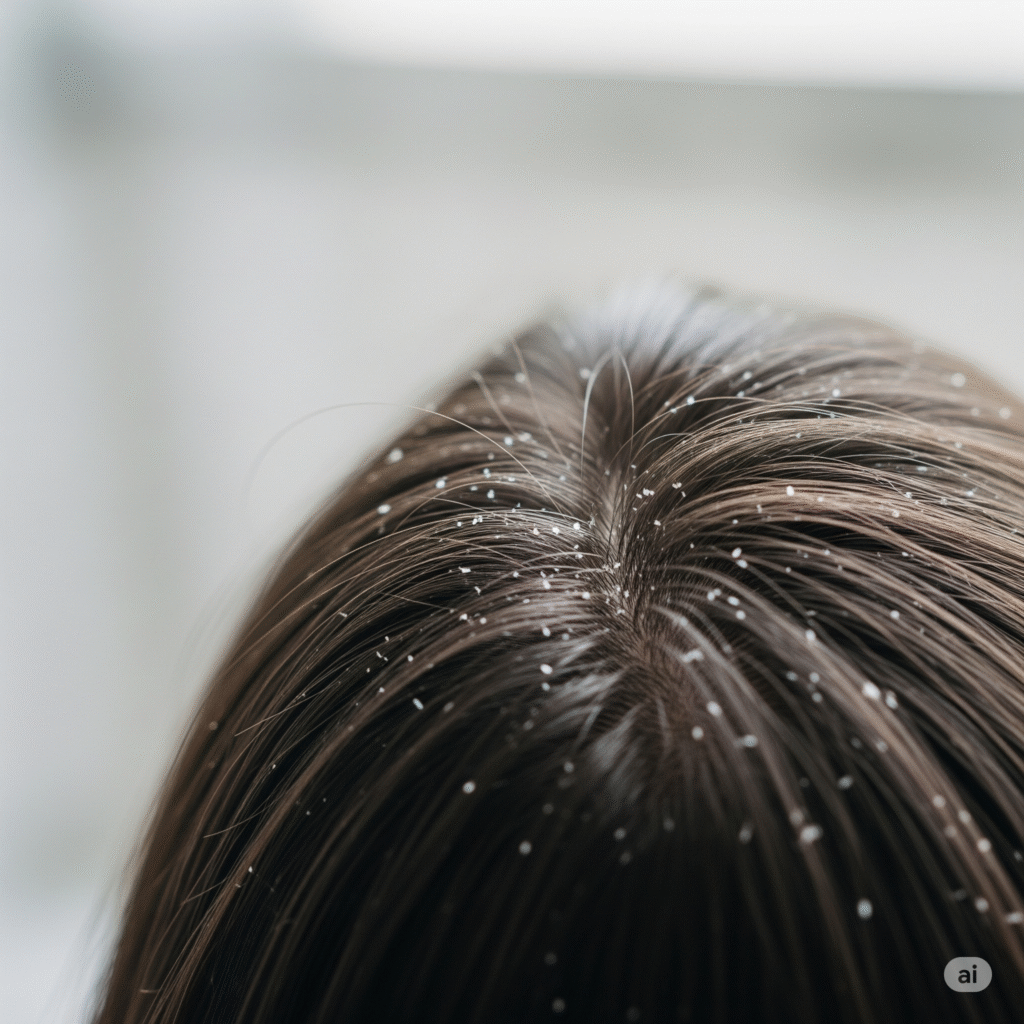Dandruff
Introduction
Dandruff is the condition of a common skull that is characterized by flaking of dead skin cells from the scalp. It often causes itching, irritation and visible white or yellow flakes on the hair or shoulders. While not infectious or severe, dandruff can be consistent and embarrassing. This is usually caused by dry skin, excess oil, fungal infections, or sensitivity to hair products.

Types of Dandruff
Dry Skin Russian
Lack of moisture in the skull, leading to small, white, non-oleys flex.
Oily scalp dandruff
It occurs when excess oil mixes with dead skin, produces yellow, smooth flakes and itching.
Product Build-Up Dandruff
Due to excessive use of styling products, which bothers the skull and leads to flaking.
Fungal dandruff
Malsiyasia was triggered by a high growth of fungi, causing irritation and provoking the skull.
Causes of Dandruff:
- Dry scalp leads to the flow of small, white, non-oleys flakes.
- The dead skin collides together with the oily skull and becomes a smooth bunch.
- Mallsiyasia's overgrowth of fungi disturbs the skull and increases the skin cell turnover.
- Ineligible hair washing allows oil and dead skin to produce and revolve around.
- The use of rigid shampoos or chemicals irritates the skull and causes flaking.
- Poor hygiene can lead to skull infection and excessive dandruff formation.
- Sensitivity to hair care products triggers allergic reactions or inflammation to the skull.
- Cold, dry weather reduces the moisture of the skull, leading to an increase in flaking.
- Stress weakens the immune system, deteriorating the symptoms of dandruff.
- Lack of poor diet in zinc, B vitamins, or healthy fats affects the health of the skull.
- Hormonal imbalance increases oil production and promotes fungal growth on the skull.
- Some skin conditions such as eczema or psoriasis cause symptoms such as flaking and dandruff.
Clinical features of Dandruff:
Skull Flakeing
White or yellow flakes appear on the skull, hair and shoulders.
Itching
Constant scalp itching, often deteriorating due to dryness or irritation.
Redness of skull
Continuous scratches may cause mild to moderate swelling or redness.
Oily patch on the skull
Smooth, crushed region, especially in the dandruff of seborhik dermatitis-type.
Dryness or tight feeling of skull
A sensation of dryness or tightness can be felt, especially in cold weather
Symptoms associated with Dandruff
- White or yellow flakes falling from the scalp on the hair and shoulders.
- Constant itching sensation on the skull, leading to often inconvenience.
- The skull appears dry, irritated or swelling in some areas.
- Smooth or oily patches on the skull with clumped flakes.
- Redness or sensitivity of the scalp due to inflammation.
- burning sensation in affected skull areas.
- The hair may feel sticky or can look dull due to the scalp oil.
- Light hair falls in thin or hair severe, untreated cases.
Investigations in Dandruff
- Visual inspection of the skull to assess flaking, redness, oil, or scaling patterns.
Tinia on the skull uses ultraviolet light to detect fungus infections such as capitis.
Scraping from the skull is examined under a microscope to examine the fungus elements.
The skull samples are cultured to identify fungal organisms such as Malasazia or dermatophytes.
If allergic contact dermatitis is suspected of hair products or shampoos.
A non-invasive tool to increase the skull and identify the characteristics of Russian, psoriasis or dermatitis.
